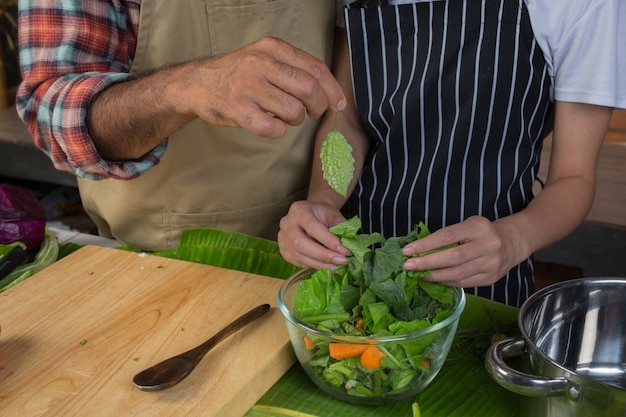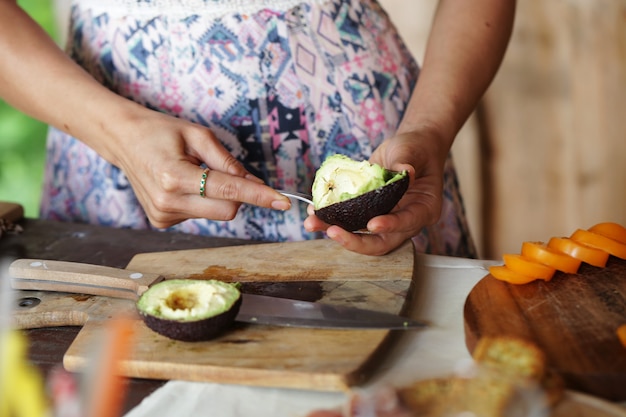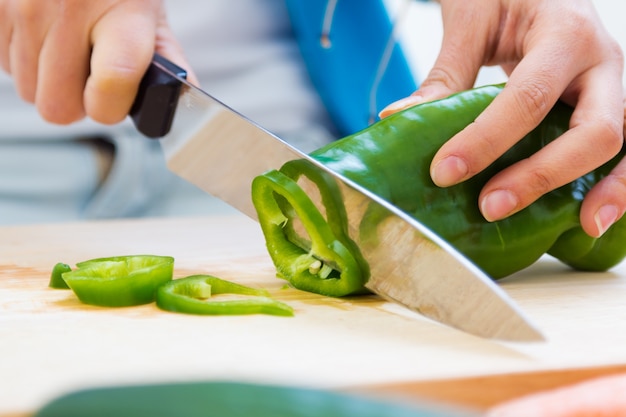Part 1: The Basics of Gator

Types of Gator Meat
There are two main types of gator meat you'll encounter: Tail Meat: This is the most popular cut, prized for its leanness and tender texture. It's perfect for grilling, frying, and making into delicious sausages. Body Meat: A bit tougher and richer in fat, body meat is better suited for stewing or braising. It's often used for dishes that require a longer cooking time.Preparing Gator
Before you can start cooking, you need to prep your gator. This involves removing the skin, which can be a bit tricky for the uninitiated.- First, you'll need to remove the skin. This can be done using a sharp knife or a pair of kitchen shears. Just be careful, those scales are sharp!
- Once the skin is off, you can cut the meat into smaller pieces, depending on your chosen recipe.
Part 2: A World of Gator Recipes

Gator Sausage: A Southern Classic
This is a simple but incredibly tasty dish. You can make your own gator sausage, or find ready-made ones at some specialty stores.To make your own, grind up some gator tail meat with your favorite seasonings. I love a mix of paprika, garlic powder, cayenne pepper, and salt, but feel free to experiment! Then, stuff the mixture into sausage casings and cook them in a pan or on the grill. They're fantastic served with mashed potatoes, coleslaw, or a tangy barbecue sauce.
Gator Jambalaya: A Cajun Feast
Who doesn't love a good jambalaya? This Cajun staple becomes even more delicious with the addition of gator!Here's how to make it: Start by cooking your gator meat in a large pot with some chopped onions, celery, and bell peppers. Then add in some diced tomatoes, rice, and your favorite Cajun spices, and let it simmer until the rice is cooked through. Serve it up with a dollop of sour cream or a sprinkle of chopped green onions.
Gator Gumbo: A Louisiana Staple
Gumbo is a Louisiana culinary icon, and it's remarkably versatile. And you guessed it, gator can be a star ingredient!You can use a dark roux for a richer, deeper flavour, or a lighter roux for a brighter taste. Simply cook the roux in a large pot until it reaches your desired colour. Then add in your gator meat, some chopped vegetables like onions, celery, and green bell peppers, and your favourite Cajun spices. Let it simmer until the gator is cooked through, then add in some chicken stock or water and a bit of okra or filé powder for that classic gumbo texture. Serve with white rice.
Grilled Gator: Simple and Flavorful
If you're looking for a straightforward and flavourful way to cook gator, grilling is the way to go.Season your gator tail meat with salt, pepper, and any other herbs or spices you like. I recommend a simple blend of garlic powder, paprika, and a pinch of cayenne pepper. Then grill it over medium heat for about 3-5 minutes per side, or until it's cooked through. It's delicious served with a side of grilled vegetables or a light salad.
Gator Etouffee: A Creamy Delicacy
This is a rich and creamy dish that's perfect for a special occasion.It's essentially a thickened stew made with gator meat, a flavorful sauce, and some vegetables. Start by making a roux with butter and flour. Then add in some chopped onions, celery, and green bell peppers. Let it cook until the vegetables are soft, then add in your gator meat and some Cajun spices. Simmer until the gator is cooked through, then add in some chicken stock or water, and some heavy cream or milk. Let it simmer until the sauce thickens, then serve over rice.
Part 3: Beyond the Plate: Gator Conservation and Folklore

The Importance of Gator Conservation
Here's the truth: alligators are a vital part of the ecosystem. They help maintain balance, acting as apex predators and controlling populations of other animals. Sadly, they face numerous challenges, like habitat loss and pollution, and illegal hunting still poses a threat.Gator Facts and Folklore
You know, there's a lot of fascinating stuff about gators. They've been around for millions of years, evolving some incredible adaptations. They can hold their breath for a long time, boast powerful jaws, and are surprisingly agile. They're also masters of camouflage, blending seamlessly into their surroundings.Then there's the folklore. Gator stories are woven into the fabric of many cultures, from Native American tales to Southern legends. You've got the classic "gator in the swamp" image, and of course, the legend of the "gator man," said to have lived in the swamps and communicated with alligators. It's captivating stuff!Part 4: Gator Beyond the Swamp: A Growing Trend
Okay, now let's talk about the bigger picture. Gator has become a bit of a trend lately, popping up in all sorts of unexpected places.Gator in Popular Culture
There's been a surge in interest in alligator meat in recent years, and it's not just about the taste. It's become a cultural phenomenon, appearing in movies, TV shows, and even music. It's even made its way into fashion, with some designers incorporating gator skin into their creations.Gator Farming: A Sustainable Approach
There's also been a growing interest in gator farming. This practice is becoming more common, offering a sustainable way to produce alligator meat and other products, like leather. Gator farming can help meet the growing demand for gator while also supporting conservation efforts.Part 5: Gator Safety: A Word of Caution
Now, let's be realistic here. Gators are wild animals, and they can be dangerous if you're not careful. So, let's talk about safety.Gator Safety Tips
- Respect their territory: Stay away from areas known to have alligators, especially when swimming or wading in the water.
- Be aware of your surroundings: Look for signs of alligators, such as tracks, nests, or basking spots.
- Don't feed them: Feeding alligators can make them lose their fear of humans, which can lead to dangerous interactions.
- Keep a safe distance: If you see an alligator, stay at least 50 feet away.
- Report any sightings: If you see an alligator behaving aggressively or in an area where it shouldn't be, report it to the local authorities.
Part 6: Gator Ethics: A Focus on Sustainability
I'm a strong advocate for sustainability and responsible harvesting. So, when it comes to gator, there's more to it than just picking a recipe and whipping up a dish.Sustainable Gator Practices: A Responsible Approach
The good news is that there are organizations and businesses out there dedicated to sustainable gator practices. They're focused on ensuring that alligator populations are healthy and that harvesting is done responsibly.Choosing Your Gator: Making an Informed Decision
When buying gator, it's wise to seek out sources with sustainable practices in place. Ask about their harvesting methods and how they manage their populations. It's worth doing some research before you buy.Part 7: Mastering the Art of Gator Cooking: Tips for Success
Now, let's talk about the actual cooking!Tips for Cooking Gator: Achieving Perfect Results
- Don't overcook it: Alligator meat can become tough if you overcook it. It's best to cook it to medium-rare or medium, ensuring a tender and juicy outcome.
- Use high heat: High heat is ideal for searing alligator meat, giving it a nice crust and locking in the flavors.
- Seasoning is key: Alligator meat has a mild flavor, so it takes on the flavors of the seasonings you use. Be generous with your spice blends, creating a delicious depth of flavor.
- Pair it with bold flavours: Alligator goes well with strong flavours, like citrus, garlic, and spices. Experiment with different combinations to create your own signature dishes.
Gator cooking faqs: Answers to Common Questions
Here are some frequently asked questions about cooking gator:
| Question | Answer |
|---|---|
| What does alligator taste like? | Alligator meat has a mild, slightly sweet flavor, often compared to chicken or a cross between chicken and fish. It has a firm texture, similar to white meat. |
| What's the best way to cook alligator? | There are many ways to cook alligator, including grilling, frying, sautéing, and braising. It's important to not overcook it, as it can become tough. |
| How can I tell if alligator is cooked through? | Alligator is cooked through when it reaches an internal temperature of 145 degrees Fahrenheit (63 degrees Celsius). The meat should be firm and no longer pink. |
| What are some good side dishes for alligator? | Alligator pairs well with many side dishes, including rice, potatoes, vegetables, and salads. You can also try serving it with a tangy sauce, such as barbecue sauce or a citrusy vinaigrette. |
| Where can I find gator recipes? | You can find many alligator recipes online, in cookbooks, and at specialty food stores. |
Part 8: The Final Word on Gator Cooking: A Culinary Adventure
So there you have it. You've got the basics, you've got some recipes, and you're ready to take a culinary plunge into the world of gator cooking. But remember, this is just the beginning. There's always something new to discover when it comes to this unique and fascinating meat.So go on, give it a try. You might just find yourself hooked, just like I was all those years ago.
Everyone is watching

Corn on the Cob: The Ultimate Guide to Perfectly Cooked Ears
Healthy MealsAh, corn on the cob. Just the name evokes images of sunny days, barbecues, and that sweet, juicy flavour that ...

Scallops: The Ultimate Guide to Perfect Cooking
Healthy MealsAh, scallops. Those delicate, sweet, and utterly delicious morsels of the sea. They hold a special place in my...

Spaghetti Squash: The Ultimate Guide to Cooking and Serving
Healthy MealsRemember that time you saw spaghetti squash at the supermarket, looking all bumpy and strange, and thought, "W...

Salmon Cooking Times: Perfect Guide for Every Recipe
Healthy MealsLet me tell you, cooking salmon is an art form. It's all about getting that perfect balance: juicy and tender,...

Ham Cooking Time: How Long to Bake, Smoke, or Boil a Delicious Ham
Healthy MealsAh, ham. It's a classic, isn't it? A real crowd-pleaser, especially around holidays. And when done right, it'...
